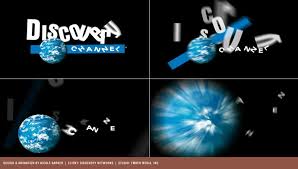 Carrying on with this content evaluation, we move to something a little bit more modern and exciting. I say modern not because videos and animations are new things but because advances in technology have made it easier and more accessible to create and view video and animated content like never before. We are no longer restricted to televisions and corporate movies or shows – anyone can now create video content and many people and brands do.
Carrying on with this content evaluation, we move to something a little bit more modern and exciting. I say modern not because videos and animations are new things but because advances in technology have made it easier and more accessible to create and view video and animated content like never before. We are no longer restricted to televisions and corporate movies or shows – anyone can now create video content and many people and brands do.
Quality matters
As with any form of content, quality is one of the most important factors and any audience will give up if that quality isn’t there. This applies to written, visual and audio content and because video content has grown in popularity over the years it helps show authority as well.
Anyone can make a video with a camera and some basic editing software. YouTube is just one platform that makes it easy to reach out to audiences with funny, informative and enjoyable content but other social media platforms have also adopted this rise to include this content, with Facebook’s videos celebrating their ten year anniversary another example. These are simple pieces of content that got people interested and engaged.
Is it effective and suitable?
Video content is certainly effective and people enjoying something that is a bit more interactive than a block of text on the screen in front of them. It provides more of an illusion of interaction – because in reality they are no more interactive than audio or text content, it’s being able to see someone or something that gives us that impression. This also makes it more socially acceptable to some people.
Animations add in something else. Whether the same person creates the animations or someone else is brought in to do them, it takes great skill and planning to make things that, while they may appear simple, are incredibly complex underneath the surface. Speak to any expert in the field and they can tell you this.
Whether it is suitable is a different question entirely. We live in a content and media focused age that is slowly moving away from “content content content” to higher quality content. Reviews of films, concerts, shows, games, books, plays and more are often done with videos as they can show clips of what is being talked about. You still need to be very careful with copyright, however.
This medium can often be more expensive and harder to produce to make sure the quality is there compared to a blog, article or meme and brands need to take this into account when deciding if video content is a suitable medium for them – whether as a one off or as a longer project. High quality videos can be shared easily and will gain traction but if there is no way to make sure you get a good return on your investment, is it worth going down that path at all?
A time saver or just for the lazy audience?
Videos convey content without people having to read large blocks of text which can appear dull and tedious. In some cases, video content is closer to audio where images are present on the screen and it’s the dialogue that is conveying the real content but I’ll cover that later.
Is it easier for people to watch a video than read, or are audiences becoming lazy and accustomed to certain formats more than others? Smartphones certainly help video content make the rounds as people go about their daily business and they don’t require you to focus so heavily on the reading. Images, animations and recordings can add to the content with visual aids that emphasise the point and purpose of the content and it doesn’t matter if you look elsewhere for a few moments because the chances are nothing overly crucial has passed.
Author: Dave McCreery
Courtesy: www.evolutiaseo.co.uk